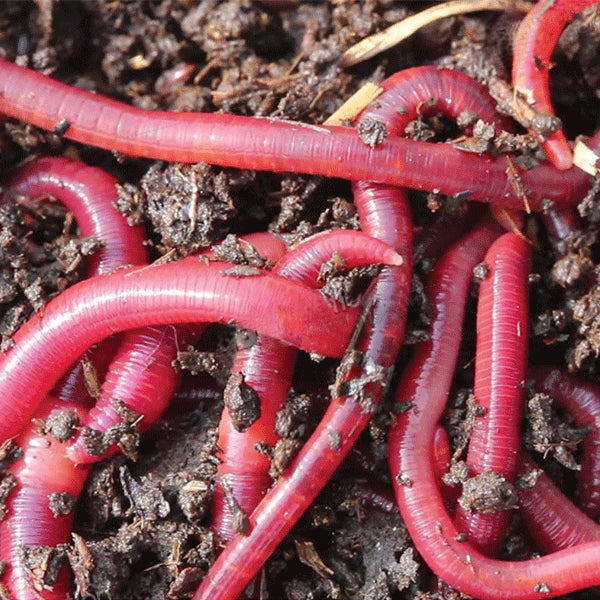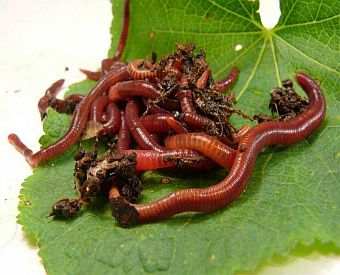Using Red Wigglers for Reliable Organic Waste Disposal
Making use of red wigglers for organic garbage disposal presents an engaging strategy to handling food scraps while advertising environmental sustainability. These worms not only enhance waste disintegration but additionally yield useful worm spreadings, which can significantly improve soil wellness. Their ability to process large volumes of organic material with minimal initiative settings them as an available remedy for families and communities alike. Comprehending the nuances of setting up an effective worm bin and keeping an optimum habitat is critical for maximizing their benefits. The next action in this procedure might stun you.
Benefits of Using Red Wigglers
Among the most engaging advantages of using red wigglers for organic waste disposal is their amazing performance in composting. These worms, scientifically called Eisenia fetida, are particularly adapted for breaking down natural products, enabling them to refine waste approximately two times their body weight each day. This quick decay not only accelerates the composting procedure yet also generates nutrient-rich worm castings that considerably enhance dirt high quality.
Furthermore, red wigglers add to a reduction in land fill waste. By drawing away natural materials from land fills, they assist reduce methane emissions-- a powerful greenhouse gas. This ecological benefit is crucial in the battle against climate adjustment.
In addition, red wigglers are low-maintenance and can grow in numerous environments, making them available for both novice and experienced composters. Their ability to duplicate rapidly makes certain a constant populace, facilitating ongoing waste handling.
Setting Up Your Worm Container
Producing a reliable worm container is essential for making best use of the advantages of composting with red wigglers. The initial step is choosing an appropriate container. A container made of plastic or timber, with an ability of 10 to 20 gallons, is ideal. Make certain the container has ample drainage holes to avoid excess dampness, as red wigglers flourish in a moist but not soaked atmosphere.
Once the bin is established, present the red wigglers, enabling them to accustom to their brand-new environment. It's critical to check dampness levels and temperature level frequently. A well-maintained bin will not only support the wellness of the worms however additionally help with efficient disintegration of organic waste. By following these guidelines, you can create a successful environment that adds to lasting waste monitoring.
What to Feed Red Wigglers
An understanding of the suitable diet regimen for red wigglers is important for maintaining a healthy worm populace and maximizing composting efficiency. Red wigglers prosper on a diverse diet regimen that mainly consists of natural materials. Ideal food sources consist of veggie scraps, fruit peels, coffee grounds, eggshells, and shredded paper. These items not only supply crucial nutrients however additionally contribute to the dampness equilibrium within the worm bin.
It is vital to stay clear of particular foods that can damage the worm population. Red wigglers should not be fed meat, milk items, oily foods, or processed items, as these can bring in pests and produce unpleasant smells. red wigglers. In addition, citrus fruits and spicy foods ought to be minimized, as their acidity can be destructive to worms
Keeping track of the worm container for food intake prices will certainly help make sure that red wigglers are getting an adequate diet while preserving a reliable composting atmosphere. Appropriate feeding practices are necessary for cultivating a flourishing community within the worm container.
Preserving Your Worm Habitat
A properly maintained worm habitat is redirected here necessary for the health and wellness and productivity of red wigglers. To guarantee optimum problems, it is critical to check temperature level, moisture, and oygenation within the worm bin. Red wigglers flourish in a temperature level variety of 55 to 77 levels Fahrenheit. Surpassing this range can worry the worms, so it is essential to position the container in a suitable place far from direct sunlight and severe temperatures.
A great guideline of thumb is to keep wetness at approximately 70% to 80%. If the bedding comes to be too damp, it can lead to anaerobic conditions that are damaging to the worms.

Utilizing Worm Spreadings in Gardening
Rich in nutrients and advantageous bacteria, worm castings offer as a remarkable organic plant food for horticulture. Created via the digestive processes of red wigglers, these castings include a variety of important nutrients, including nitrogen, phosphorus, and potassium, which advertise robust plant development. Unlike synthetic fertilizers, worm castings provide a slow-release system, making sure that nutrients are offered to plants over a prolonged period, thus minimizing the danger of nutrient leaching and soil depletion.
Along with nutrition content, worm spreadings improve dirt framework and aeration, boosting wetness retention and drainage. The microbial life existing in worm castings aids to reduce virus and advertises a healthy dirt community, more benefiting plant wellness. When integrated into the soil or made use of as a top clothing, worm castings can significantly improve seed germination rates, origin development, and general plant vitality.
For ideal outcomes, gardeners must apply worm spreadings at a price of 1-2 inches per square foot, mixing them right into the soil or integrating them right into potting mixes. On the whole, using worm spreadings is a green method to improving soil fertility and making sure growing garden atmospheres.
Conclusion

Comments on “Proven composting red wigglers: Expand your worm farm”